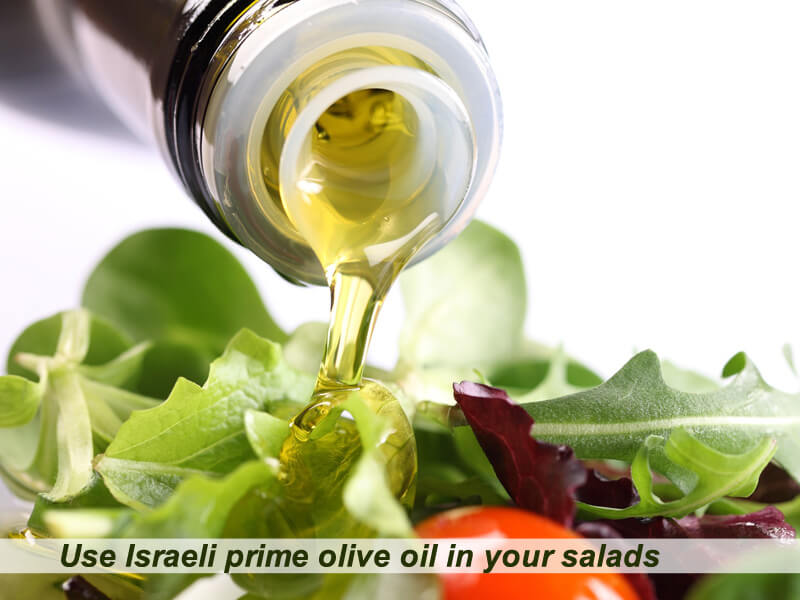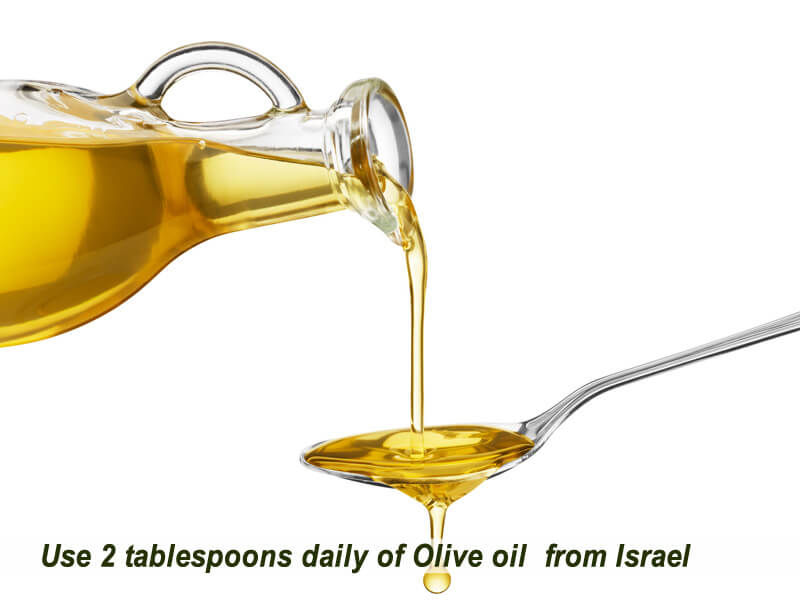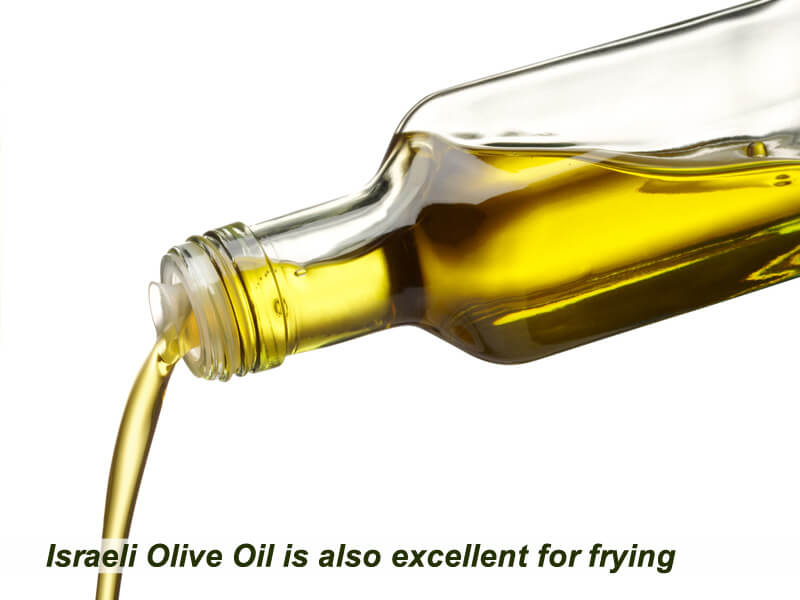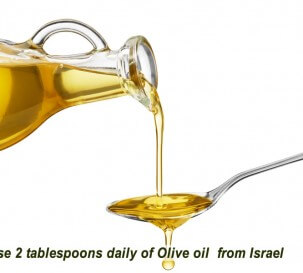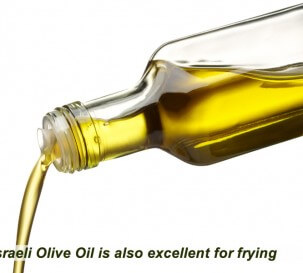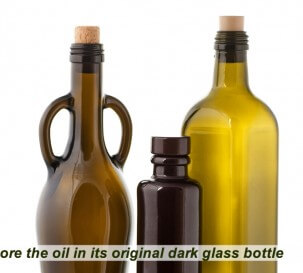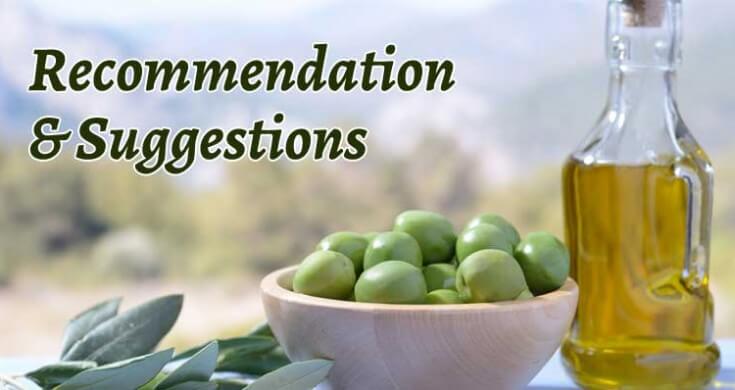
Click Here and get your FREE olive tree in the Land of the Bible!
Ideas, Recommendations & Suggestions
It is very easy to identify a premium olive oil: When you smell it, you will experience an overwhelming olive fruit aroma. When you taste the oil the back-center portion of your tongue will now look for bitterness (determined by ripeness and variety of olive), a positive characteristic even if it sounds anything but. Finally, the oil goes down into your throat where you judge its pungency. If it’s particularly sharp, you might cough, but the peppery bite is proof of fresh oil with healthy olives well-processed.
All these sensations will diminish with time, so, for example, if an oil is

too ‘peppery’ for you now, wait a month (even, or especially, with an unopened bottle) and it may very well have mellowed.
A Few Quick Serving Ideas: Use extra virgin olive oil in your salad dressings.
Purée roasted garlic, cooked potatoes and extra virgin olive oil together to make exceptionally delicious garlic mashed potatoes. Season to taste.
Drizzle extra virgin olive oil over healthy sautéed vegetables before serving.
Purée extra virgin olive oil, garlic and your favorite beans together in a food processor. Season to taste and serve as a dip.
Instead of putting the butter dish out on the table, place a small cup of extra virgin olive oil to use on your bread or rolls.
Recommended Amounts of Olive Oil: For an average diet of 1500 calories the recommended amount of olive oil is two tablespoons a day.
Is Olive Oil Also Good for Frying?: Contrary to popular belief, olive oil is excellent for frying for several health reasons:
The burning point of olive oil is 428˚F and its smoking point is 356˚degrees. In regular frying it does not reach this temperature, so it does not break down, hardly oxidizes, and retains its healthy fatty acids and healthy properties.
Share this Video:Tweet
When ordinary oils used for frying reach 428˚F free radicals are created (strong oxidants which are very harmful) at a level of 18%. By contrast, when using olive oil, only 2% free radicals are created!
It has also been found that far less olive oil penetrates the fried food. In other words, the finished food contains less oil after frying than when other oils are used.
Seasoning, Baking, and Cooking: For dressing salads, sauces, and mayonnaise, extra virgin olive oil is recommended to enrich the taste.
Virgin olive oil can also be substituted for margarine, butter, or other fat when baking cakes and cookies. The vitamin E in olive oil creates a refined texture and preserves the freshness of the baked goods. We recommend filling a small bottle with olive oil for sprinkling when baking.
Olive oil is also suitable for long slow-pot roasting.
A little olive oil sprinkled on popcorn improves the flavor.
Keeping Olive Oil: If you want to preserve the qualities of olive oil for a long time, follow these tips:
- Keep the oil in its original dark glass bottle.
- Store the oil in a shady place, out of the sun.
- Replace the cap on the bottle firmly after use.
- Keep the bottle away from the stove. Any source of heat speeds up the breakdown process of the oil.
- If you buy a large quantity of oil in a metal container, keep the container in a cool, dark place, and from time to time as necessary pour a small quantity of oil into a dark glass bottle
How to Taste Olive Oil
(1) Pour a little olive oil (approximately 1 tablespoon) in a small glass. Cover the glass with one hand, shake it delicately with the other until the oil adheres to the entire inside surface. Warm oil in the glass with your hands until it is close to body temperature.
(2) Lift the glass to your nose and sniff rapidly and deeply three time (raising your nose up and away from the oil between each sniff). Olive oils have aromas just like wine. We then tried to analyze the aroma. There really is a difference in aromas!
(3) Tasting: Take a sip (approx. 10 drops into mouth). DON’T SWALLOW! Roll the olive oil around in your mouth for approximately 6 seconds and then spit it out (novices have to remember not to spit out the oil too quickly). The oil should touch all areas of the mouth so that the various tastes and sensations can be noted. Then it is spit out.
(4) Between tasting each kind of olive oil, drink lots of water and eat a small piece of bread to cleanse your palate. No wine – just water.








